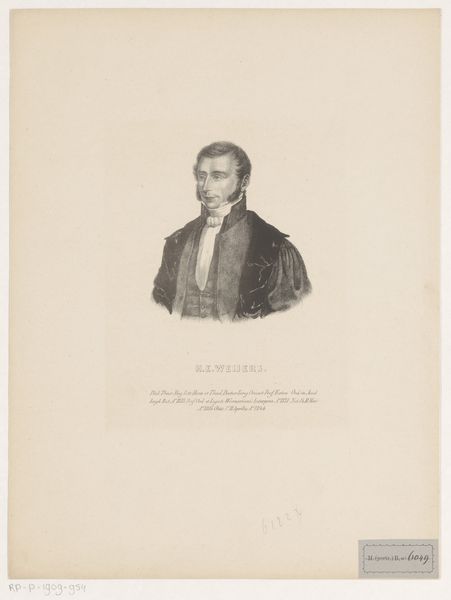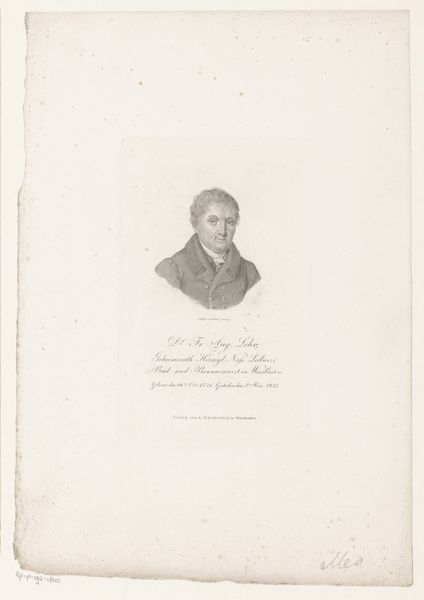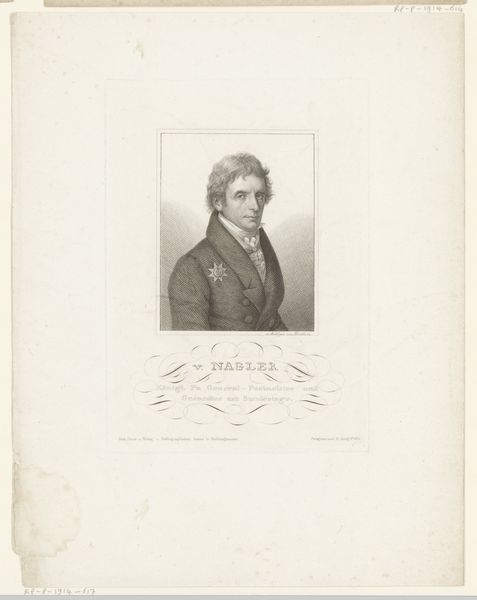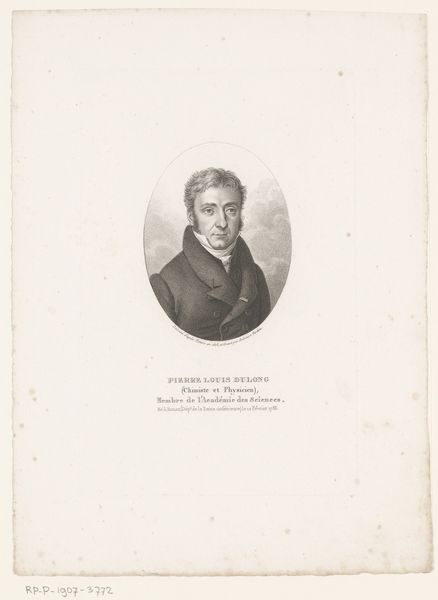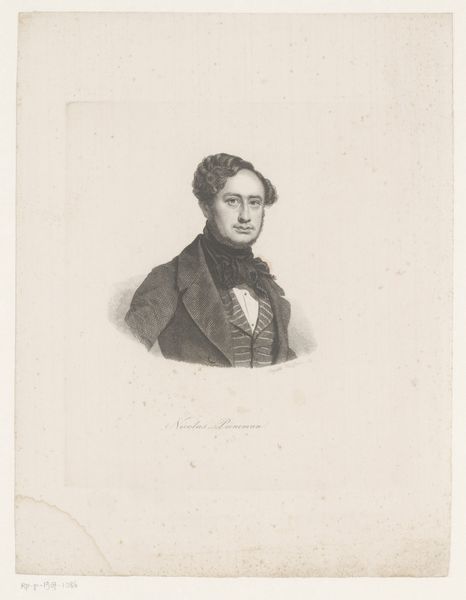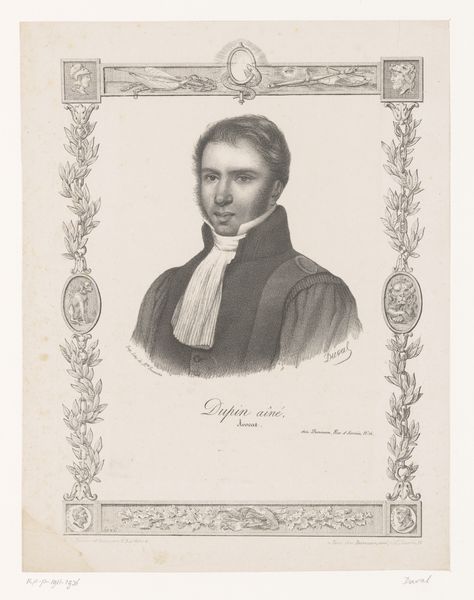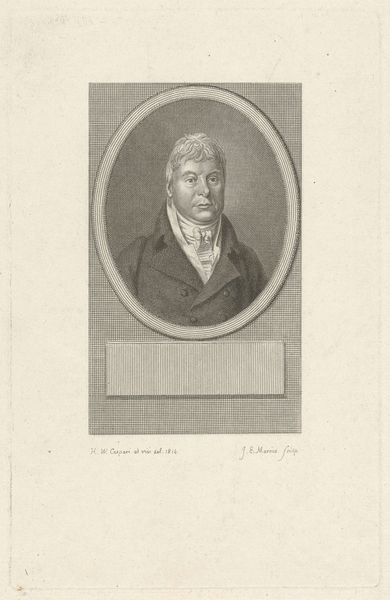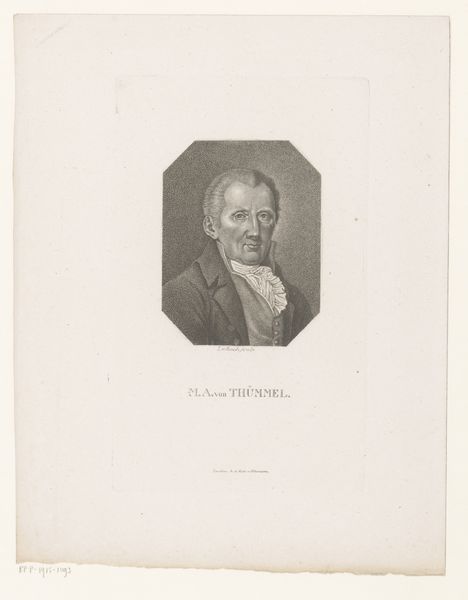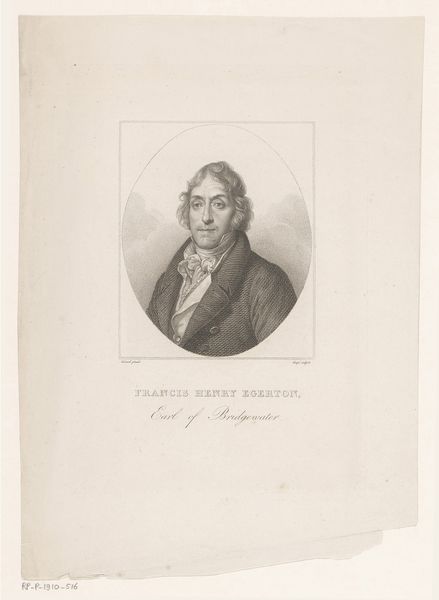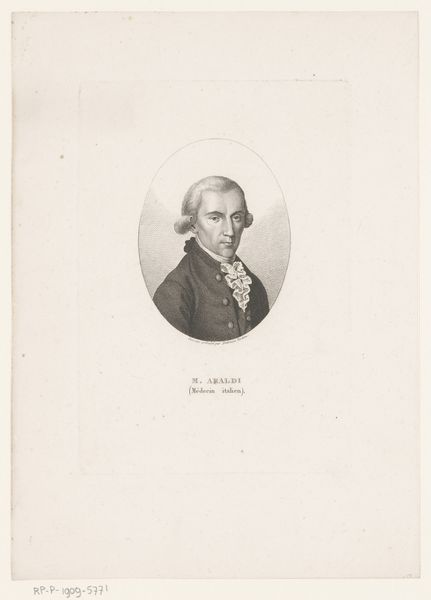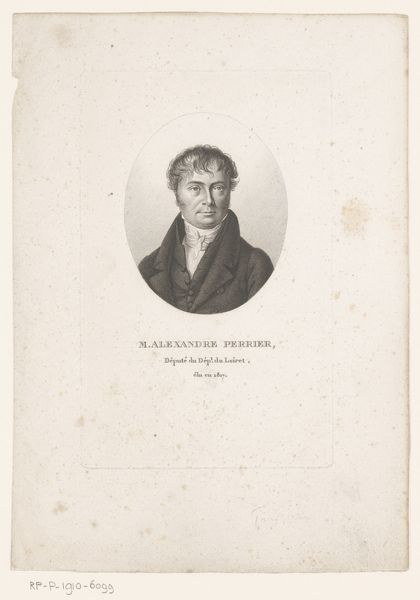
print, engraving
#
portrait
#
neoclacissism
# print
#
old engraving style
#
engraving
Dimensions: height 186 mm, width 132 mm
Copyright: Rijks Museum: Open Domain
Curator: Here we have a portrait of Jean Victor Marie Moreau, a print dating roughly from 1785 to 1858 and held within the Rijksmuseum collection. It is an engraving, falling under the neoclassical style. Editor: My first impression is somber, yet dignified. The monochromatic palette adds to the seriousness, and the oval framing feels quite classical and restrained. Curator: Indeed. The choice of engraving is significant here, mirroring the Neoclassical movement’s interest in precision and line, harking back to classical forms of expression and their associations with status, austerity, and rationality. Considering Moreau's role as a general during a revolutionary period, this idealized and controlled representation arguably attempts to legitimize his authority. How do you see that reflected in the symbolic language? Editor: I see it mostly in his gaze—direct and unwavering, projecting confidence and command, despite the relatively intimate scale of the piece. The ascot is almost militaristic. It's as if the artist aimed to immortalize not just Moreau's image, but the very essence of his power, channeling what Jung might call an archetype of the stoic leader. It lacks dynamism, even, for such a supposedly energetic subject. Curator: Precisely. It’s critical to note the socio-political dimensions underpinning such commissions. Moreau's image would circulate during a time of great upheaval; images such as this help control the narrative. And let us note what isn't depicted. The unembellished background brings an almost relentless focus back to Moreau. Editor: The background amplifies that controlled atmosphere, doesn't it? By stripping away distractions, it forces a concentrated engagement with Moreau’s features and therefore, the symbolic weight they carry. I'm especially struck by the almost severe lines of his jaw. Curator: A reflection of an era hungry for order, for strong men to take the reigns. To that end, the portrait feels a bit like propaganda—an attempt to construct and cement Moreau's legacy according to particular sociopolitical dictates. Editor: Yes, but also testament to art's potential to mold cultural memory, far beyond simple biographical portraiture. It’s as much a reflection of an age and its desires as it is a representation of Moreau. Curator: A fascinating point indeed. It seems that despite its limitations, an engraving can open avenues for rich commentary regarding individual identity set against a society undergoing tremendous transformation.
Comments
No comments
Be the first to comment and join the conversation on the ultimate creative platform.
